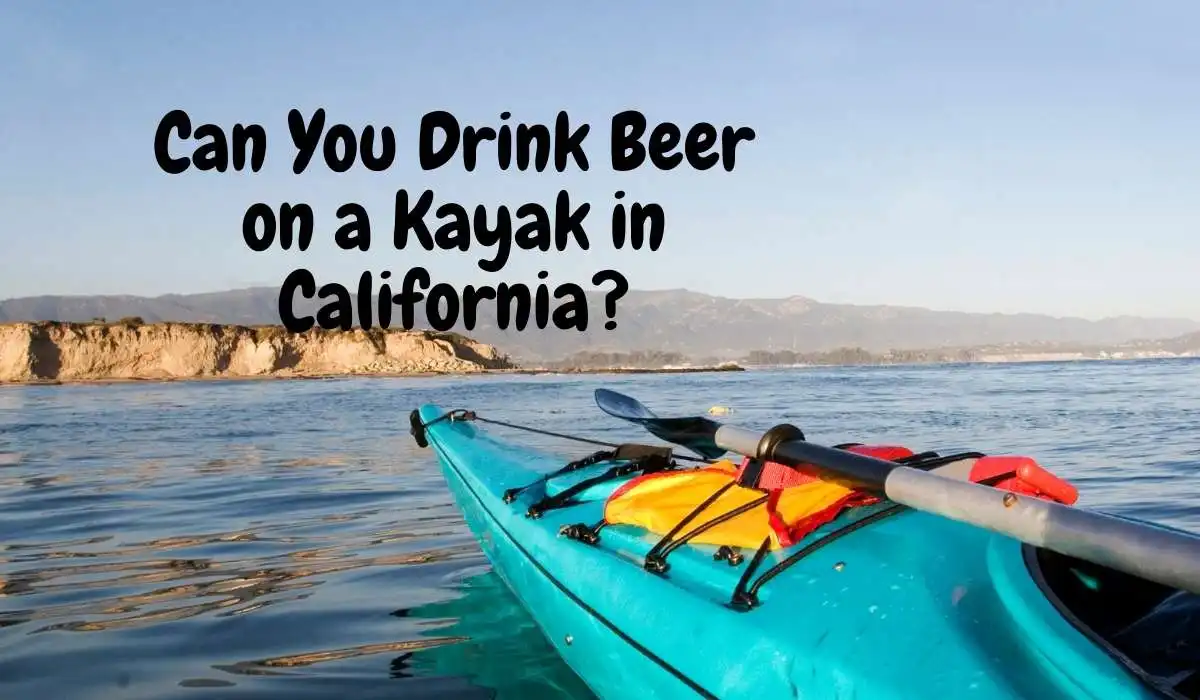You can’t drink beer on a kayak in California. Boating rules prohibit alcohol use while operating. BUI laws strictly enforced with BAC limits of 0.08%. No open container laws but BUI can lead to fines up to $1,000 and jail time. Safety vital as alcohol intensifies sun, wind, boat effects. Be aware of legal limits for a safe kayak experience.
Key Takeaways
- Operating a kayak under the influence of alcohol is illegal in California.
- Legal BAC limit for kayaking is 0.08%.
- Alcohol consumption can impair judgment and reaction times on a kayak.
- Violating BUI laws can lead to fines, jail time, and other legal repercussions.
- Open container laws prohibit drinking while operating a kayak.
Boating Regulations Regarding Alcohol in California
When boating in California, you must follow strict regulations regarding alcohol consumption to guarantee safety on the water. Boating Under the Influence (BUI) is illegal in California, with a blood alcohol content (BAC) limit of 0.08%. Commercial vessel operators face penalties for BAC levels of 0.04% or greater, emphasizing the zero-tolerance approach towards alcohol on a boat. While there are no open container laws on boats in California, operators must make sure they don’t reach any level of intoxication to comply with the laws on a boat.
Statistics reveal that almost 25% of fatal boating accidents in California involve alcohol, highlighting the dangers of BUI. Penalties for boating under the influence can be severe, including fines up to $1,000, potential jail time, and increased repercussions for subsequent offenses or incidents involving bodily injury. To ensure safe boating practices and avoid legal consequences, individuals operating watercraft in California should familiarize themselves with these regulations and consider obtaining a Boater Card to enhance their knowledge of boating laws and safety measures.
Blood Alcohol Concentration (Bac) Limits
Maintaining a blood alcohol concentration (BAC) within the legal limit is essential when operating a kayak in California to guarantee safety and compliance with regulations.
In California, a BAC of 0.08% or higher is considered under the influence when operating a vessel like a kayak. Additionally, a BAC between 0.05% and 0.08% can be used as evidence of impairment while kayaking.
For individuals under 21, it’s illegal to operate a kayak with a BAC of 0.01% or higher in California. It’s crucial to be aware that alcohol consumption on a kayak can intensify the effects of sun, wind, and boat motion, potentially impacting BAC levels.
Adhering to the legal BAC limits is vital to ensure both your safety and compliance with boating laws in California. Always be mindful of the influence of alcohol when enjoying alcoholic beverages on a kayak to have a fun and safe experience on the water.
Penalties for Drinking and Boating in California
If you’re caught boating under the influence in California, you may face penalties that include fines up to $1,000 and potential jail time for a blood alcohol concentration (BAC) over .08%. California’s laws also impose penalties on commercial vessel operators for BAC levels exceeding .04%.
Subsequent BUI offenses can lead to fines up to $1,000 and up to 1 year in jail. Penalties may escalate if the incident involves bodily injury. While open container laws don’t apply to boats in California, operators must make sure they don’t reach any level of intoxication while boating.
It’s important to understand the serious consequences of boating under the influence of alcohol, as it not only endangers your safety but also carries significant legal repercussions. Stay safe on the water by refraining from alcohol consumption when operating a boat in California to avoid facing these severe penalties.
Alcohol Consumption on Kayaks in California
Operating a kayak under the influence of alcohol in California is illegal, even though the state allows alcohol consumption on kayaks. California’s laws permit drinking on kayaks, but it’s crucial to understand the legal boundaries to avoid penalties.
The legal blood alcohol concentration (BAC) limit for kayaking in California is 0.08%, aligning with regulations for driving under the influence. Boating under the influence (BUI) is a significant concern in California, being a leading factor in fatal recreational watercraft accidents.
Intoxicated passengers on kayaks not only jeopardize their safety but also risk legal repercussions due to impaired judgment and balance. Violating BUI laws can result in severe consequences, including fines and potential jail time. Stay informed about the laws regarding alcohol consumption on kayaks in California to ensure a safe and enjoyable experience on the water.
| Laws | Kayak | Alcohol Consumption |
|---|---|---|
| BUI regulations | Legal to drink on | Legal but regulated |
| Legal BAC limit: 0.08% | Kayaks | for safety |
| Penalties for violations | Safety risks | Legal consequences |
Safety Considerations for Drinking on Watercraft
When enjoying a day on the watercraft, prioritizing safety while consuming alcohol is essential. Boat operators need to be aware that in California, it’s illegal to operate a kayak under the influence of alcohol with a blood alcohol concentration (BAC) of 0.08% or higher.
Open container laws also prohibit drinking while operating a kayak, as alcohol can impair judgment, balance, and reaction times, increasing the risk of accidents or falling overboard.
The influence of drugs, including alcohol, intensifies with factors like heat, reflection off the water, wind, and sunlight, impacting a kayaker’s ability to navigate safely.
Nearly a quarter of fatal boating accidents in California involve alcohol, making boating under the influence (BUI) a significant safety concern. Remember, boating under the influence in California can result in steep fines, jail time, and potential loss of boating privileges, underscoring the serious consequences of drinking on a kayak.
Stay safe on the water by prioritizing sobriety and responsible boating practices.

